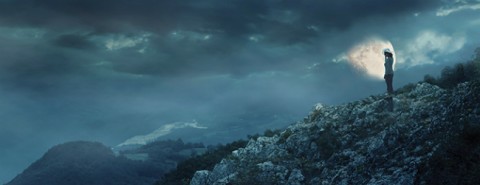Light without sight
Seeing has fooled me into thinking I have a clear view of where the road leads.

I do not know what darkness means to someone who is blind, but I am beginning to understand that light has as many meanings as dark. There is an old prayer in the Book of Common Prayer that goes like this:
Look down, O Lord, from your heavenly throne, and illumine this night with your celestial brightness; that by night as by day your people may glorify your holy Name; through Jesus Christ our Lord. Amen.
Among other things, this prayer recognizes a kind of light that transcends both wave and particle. It can illumine the night without turning on the lights, becoming apparent to those who have learned to rely on senses other than sight to show them what is real. This is the light the mystics see when they meditate in the night hours, picking up their pens in the morning to write down their revelations. It is the light Moses saw in the darkness on Mount Sinai, where the glory of God came wrapped in dazzling darkness. Dionysius the Areopagite called it “the unapproachable light in which God dwells.”




